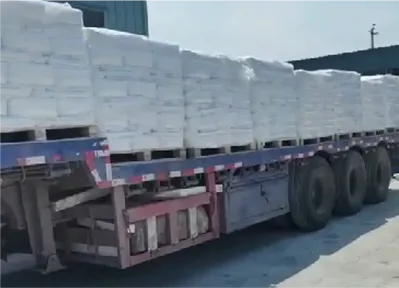
Jul . 04, 2025 11:10 Kembali kepada senarai
The Influence of Titanium Dioxide on the Printability of Paper
The paper industry has long relied on titanium dioxide (TiO₂) as a critical component for enhancing print quality and paper performance. As a versatile titanium dioxide pigment, this compound plays multiple roles in paper production, from improving brightness and opacity to influencing ink receptivity. When paper manufacturers incorporate titanium dioxide powder into their formulations, they create substrates that offer superior printability characteristics. The interaction between TiO₂ and paper fibers creates a surface that optimally balances ink absorption and holdout, making it indispensable for high-quality printing applications.

The Optical Advantages of Titanium Dioxide Pigment
One of the primary reasons paper manufacturers use titanium dioxide color modifiers is their unparalleled ability to enhance paper's optical properties. TiO₂'s exceptionally high refractive index (2.7 for rutile, 2.55 for anatase) gives paper brilliant whiteness and opacity that surpasses other fillers. This optical performance directly impacts printability by providing an ideal background for color reproduction. The titanium dioxide coating on paper fibers creates a uniform, bright surface that allows inks to appear more vibrant and true to color. Furthermore, the light-scattering properties of TiO₂ help mask the natural yellowish tint of wood pulp, creating papers that meet the exacting standards of premium printing applications.
Titanium Dioxide Pigment: Surface Modification and Ink Receptivity
The relationship between titanium dioxide powder and ink receptivity is complex yet crucial for printability. Paper treated with TiO₂ exhibits carefully balanced surface characteristics that affect how inks adhere and dry. The particle size distribution of the titanium dioxide pigment influences the paper's surface topography, creating microstructures that can either promote or hinder ink anchoring. Leading titanium dioxide manufacturers have developed specialized surface treatments that optimize these interactions. Hydrophobic TiO₂ variants, for instance, can be used to control ink penetration, preventing excessive absorption that leads to dot gain in halftone printing while still allowing sufficient bonding for crisp image reproduction.
Titanium Dioxide Coating Techniques for Enhanced Print Performance
The method of applying titanium dioxide coating to paper significantly affects its printing characteristics. In coating formulations, TiO₂ is typically combined with binders and other additives to create layers that improve surface smoothness and ink holdout. Blade coating processes can achieve extremely thin, uniform layers of TiO₂ that enhance print resolution without compromising paper flexibility. The distribution of titanium dioxide color particles in these coatings creates a surface that is chemically and physically optimized for ink transfer from printing plates. This is particularly important in offset printing, where the ink splitting between plate and paper must occur precisely to maintain image sharpness and color consistency.
The Role of Titanium Dioxide in Specialty Paper Applications
Beyond standard printing papers, titanium dioxide pigment finds extensive use in specialty paper products requiring exceptional printability. For high-end art reproduction papers, TiO₂ provides the necessary brightness and surface characteristics to accurately render fine details and subtle color gradations. In packaging applications, the titanium dioxide coating serves dual purposes: enhancing print quality while also providing the opacity needed to prevent show-through on dark substrates or reverse-printed materials. The selection of TiO₂ grade from a reputable titanium dioxide manufacturer becomes particularly critical in these applications, where specific particle size distributions and surface treatments can make the difference between acceptable and exceptional print results.
Titanium dioksida: Environmental and Technological Considerations
As sustainability becomes increasingly important in paper production, titanium dioxide powder formulations have evolved to meet environmental standards without compromising printability. Modern TiO₂ products demonstrate improved efficiency, allowing paper makers to achieve the same optical and printing performance with reduced quantities. Some titanium dioxide manufacturers now offer products with optimized particle size distributions that maximize light scattering efficiency, thereby lowering the overall TiO₂ requirement while maintaining or even enhancing print quality. Additionally, advancements in dispersion technology have led to TiO₂ products that distribute more uniformly in paper matrices, creating more consistent printing surfaces while using less material.
Future Directions in Titanium Dioxide Applications for Paper
The future of titanium dioxide color technology in paper applications points toward increasingly sophisticated solutions. Research is exploring TiO₂ particles with engineered surface morphologies that could provide even better ink anchoring while reducing the need for additional coating layers. Some titanium dioxide coating innovations focus on creating "smart" surfaces that actively interact with different ink formulations to optimize drying characteristics and color fidelity. As digital printing continues to grow, TiO₂ formulations are being adapted to meet the unique requirements of toner-based and inkjet systems, where surface energy and porosity requirements differ significantly from conventional printing methods.
Titanium Dioxide as a Printability Enhancer
The influence of titanium dioxide pigment on paper printability cannot be overstated. From its fundamental role in creating bright, opaque surfaces to its subtle effects on ink-substrate interactions, TiO₂ remains an essential component in paper manufacturing for printing applications. The careful selection of titanium dioxide powder characteristics—particle size, crystalline form, surface treatment—allows paper producers to precisely tune their products for specific printing processes and end-use requirements. As printing technologies evolve and environmental considerations become more pressing, the partnership between paper manufacturers and titanium dioxide manufacturers will continue to drive innovations that enhance print quality while addressing sustainability challenges. The ongoing development of advanced titanium dioxide coating technologies ensures that TiO₂ will remain at the forefront of paper printability solutions for years to come.
-
Using Titanium Dioxide to Reduce the Discoloration Rate of Rubber Products
BeritaJul.04,2025
-
The Influence of Titanium Dioxide on the Printability of Paper
BeritaJul.04,2025
-
The Environmental Impact of Using Titanium Dioxide in Paper Production
BeritaJul.04,2025
-
The Dual Function of Filling and Coloring with Titanium Dioxide in Rubber
BeritaJul.04,2025
-
Hidden Techniques for Improving Ink Adhesion with Titanium Dioxide
BeritaJul.04,2025
-
Comparison of the Application of Titanium Dioxide in Flexographic and Gravure Printing Inks
BeritaJul.04,2025
